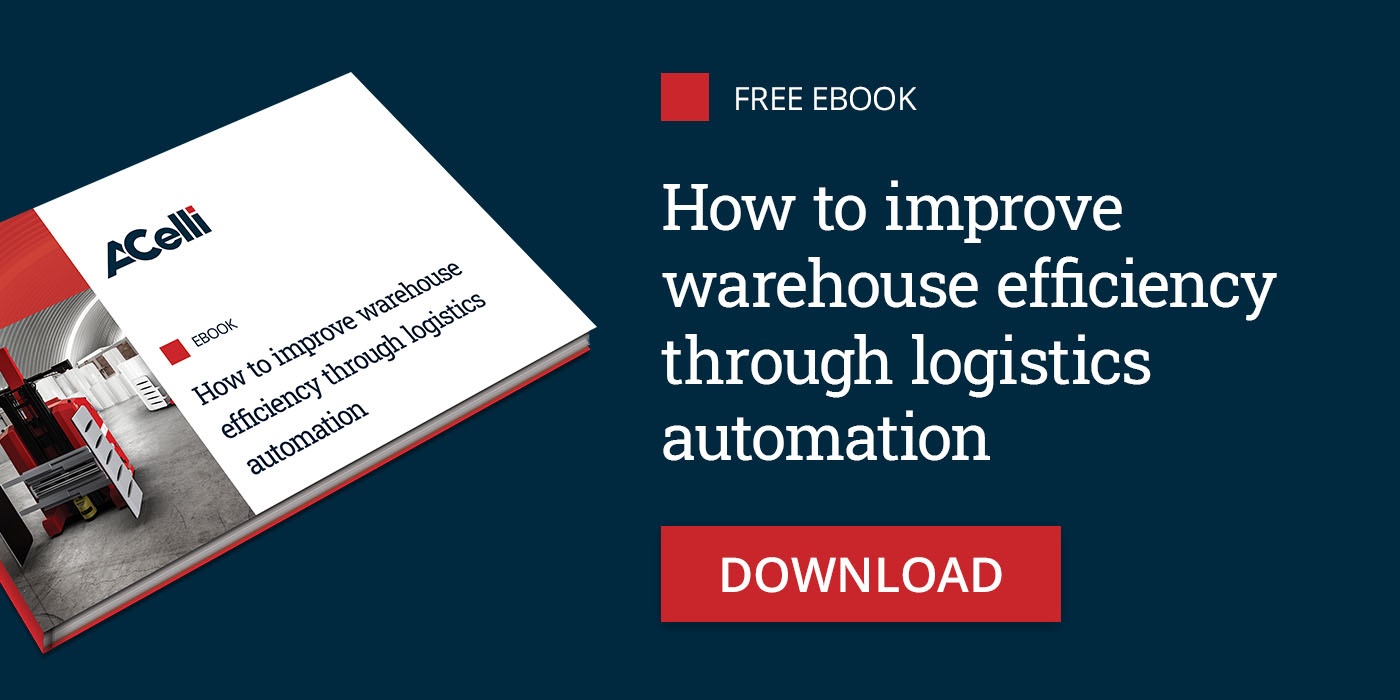Warehouse logistics in the 4.0 era certainly offers a wonderful range of special effects: roller conveyors, robots that handle and move objects, laser beam systems, sensors, labels with microchips, and computers and software that control and move all the actors on the stage. Actually, all this activity takes place not up front but "behind the scenes", although it is now playing an increasingly strategic role.
This is because the automated warehouse is filled with objects that collect, send, receive and analyse data, creating vital knowledge day after day to show if the system is working well or badly. In other words, these are tools that speed up operations, reduce rates of error, cut costs, and apply business intelligence to logistics by analysing the data produced by machines and sensors.
Warehouse logistics automation has actually been talked about for many years (it all began several decades ago with the first automated, remote-controlled handling systems). However, robotic technologies have only recently been combined with information technology, analysis systems, and transport networks data. Amazon provides a textbook example: in some of its distribution centres the use of robotics is pushed to the extreme, resembling a highly choreographed ballet with various types of machine, all working in perfect unison to transport the goods to the staff or to load consignments straight onto lorries ready for shipment.
Let's examine the main tools and handling systems used in 4.0 automated warehouse logistics.
AGVs: Automated Guided Vehicles
AGVs come in many forms, and are designed for transporting goods of various weights, including delicate or perishable items and ranging from pallets to paper rolls. They differ not only in size and appearance, but also in terms of their system of remote control.
Read more: Automatic Guided Vehicle: definition and most useful types in the warehouse
Stacker cranes
A stacker crane can cover the full height and depth of a vertical warehouse. It is an automated system made up of a mobile frame with a lifting device, able to access even the highest shelves.
IoT Sensors
These sensors help ensure the safety of the warehouse and its staff. Perimeter and motion warehouse sensors provide anti-impact protection, while wireless sensors can be put into small receivers connected to smartphones and smart wristbands. They are effectively all part of the IoT logistics, connected via Wi-Fi networks, mobile networks or Bluetooth. The warehouse logistics are therefore also tracked through wireless sensors, which help to record the activities of warehouse workers, ensure they are properly divided between departments, and monitor their levels of fatigue.
Wearable technology
Wearable devices such as wristbands, which monitor heartbeat or register the number of steps taken, can be a useful tool for protecting the safety of personnel. Augmented reality viewers in the form of glasses can give instructions to the wearer (using superimposed images or video) and provide support during certain procedures. Everything takes place in real time and can be combined with audio or video messages via VoIP.
RFID
RFID (Radio Frequency Identification) labels are now a common feature in warehouse logistics, and are becoming increasingly sophisticated as the years go by. These tags use radio waves to receive and send information, and consist of a microchip and an antenna inside a sheath made of plastic, paper or some other material. The data is collected by the warehouse management software and used for various purposes.
Drones
Drones are not yet widely used in logistics, although they do have great potential, not only for deliveries (as in Amazon's experiments), but also for picking and moving goods. They can be guided by GPS, or by Lidar systems, which use laser beams to measure the distance to an object and so offer greater precision in indoor settings.
Warehouse management software (WCS - WMS)
Management software is a vital element in warehouse logistics: there are many types available, with a variable number of functions, and you can customise them to fit your needs. The software is used to keep track of operations and costs, to manage interlinked logistic processes, to draw up inventories, to control what enters and leaves the warehouse, and to check the results of shipments.
Big Data Tools
Analytics and big data software are also gaining momentum in logistics, enabling one to plan and define strategies alongside the work of shipping management. Analytics based on "internal" warehouse data (such as production, inventory, sales and prices) can be combined with external sources (e.g. unstructured data from social networks, or performance data in relation to the supply/demand of a certain category of product). By using this raw material, machine learning algorithms can produce forecasts regarding (for example) the levels of demand for a specific product, and so offer strategic guidelines to the production department or sales division.
Cloud Computing
It would be difficult to manage these increasing amounts of assorted data were it not for the cloud. This is not just a data "warehouse" (and the metaphor is apposite here!), but rather an environment that offers computation resources at lower prices than those of your company's servers or computers, which you are required to purchase.
With cloud computing, the costs are proportional to use; there are no barriers to entry and you can add resources as required (i.e. it allows you to "scale up"). You no longer have to worry about hardware and software maintenance (updates, replacements or patches), because this is the provider's responsibility, and with a good disaster recovery plan there's no risk of breaks in service due to cyber incidents.
By using some or all these tools, you will be able to update the "physical" status of your warehouse and, more importantly, the processes taking place inside it. However, with all the technologies and solutions currently on offer, it can be difficult to find your way around.
We recommend you read our eBook, which can be downloaded free of charge, and which explains how to improve warehouse efficiency through logistics automation.

